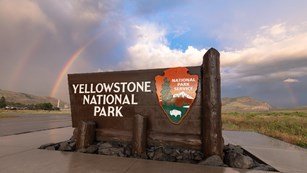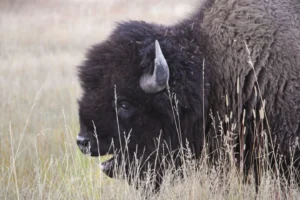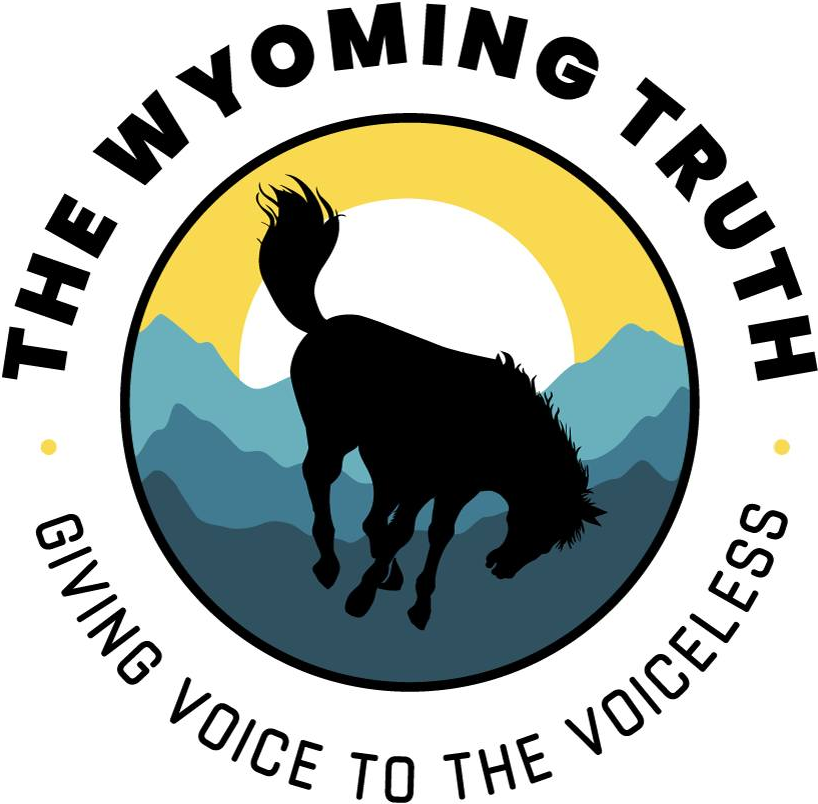Yellowstone National Park’s North Loop Opening Just in Time for the Fourth of July Weekend
Parts of the park still closed due to damage from June flooding
- Published In: Other News & Features
- Last Updated: Jul 01, 2022

Yellowstone National Park will reopen its north loop to the public Saturday. The park sustained damage from heavy flooding, rockslides and mudslides last month. (Courtesy photo of the National Park Service)
By Shen Wu Tan
Special to the Wyoming Truth
Yellowstone National Park, which sustained damage from heavy flooding, mudslides and rockslides last month, will reopen its north loop Saturday to all visitors, just in time for the Fourth of July holiday weekend.

The National Park Service (NPS) announced that 93% of Yellowstone’s roadways will be open and that it will suspend the alternating license plate system it was using temporarily for crowd control. Park visitors will be able to access the North Junction to Mammoth Hot Springs, Mammoth Hot Springs to Tower-Roosevelt and Tower-Roosevelt to Canyon Junction (Dunraven Pass) as well as the south loop of Yellowstone.
Visitors can access the south and north loops of Yellowstone using the East Entrance in Cody, the West Entrance in West Yellowstone, Montana and the South Entrance in Jackson, the park service announced Thursday. Yellowstone National Park’s south loop reopened June 22.
“We’re pleased to reopen the north loop of Yellowstone to the visiting public less than three weeks after this major flood event,” Cam Sholly, Yellowstone National Park Superintendent, said in a statement. “We have attempted to balance major recovery efforts while reopening as much of the park as possible.”
Road engineers have finished bridge and road safety inspections, and temporary repairs to wastewater systems have been checked and can handle day use on the north loop, according to the NPS. However, the agency warned the public that many waterways are still experiencing high water levels and that many backcountry areas in the north loop are still closed due to “hazardous conditions or damaged trails and bridges.”
Trevor Lavoie, a meteorologist for the National Weather Service in Riverton, told the Wyoming Truth Friday that it is difficult to pinpoint how much rainfall Yellowstone saw. He estimated that the park received anywhere between one and three inches of steady rainfall from June 11 to June 13, with the bulk of it pouring down on June 12.
Although it was not a monsoon event, Lavoie described two to three inches of rainfall for some areas of the park as a “considerable amount.” On top of the rainfall, a prolonged heat wave forecasted earlier in the week melted snow from the northern mountains, which also impacted flooding, the meteorologist noted.
“So, you already had the snow melt that contributed to the rise in the streams and rivers before the rain even started,” Lavoie said, “and then with the rain, there was likely some rain on snow that occurred as well.…So, it was an accumulation of factors that contributed to the events that transpired.”
The National Weather Service tweeted on June 14 that the Yellowstone River at Billings, Montana surpassed the flood stage at 14.7 feet, just below the all-time record stage of 15 feet set in 1997.
The historic water levels from the June flooding severely damaged roads, power lines, water and wastewater systems along with other park infrastructure, the NPS said in June.
“We are in the initial stages of developing a long-term recovery plan for the damage caused by the flood,” Naaman Horn, spokesperson for the Yellowstone National Park, told the Wyoming Truth Friday. “As we plan, we are factoring in resiliency options for permanent repairs.”
Some of the known destruction caused by the rainfall included damage to roads at the north entrance of Gardiner, Montana to Mammoth Hot Springs, Dunraven Pass from Tower Roosevelt to Canyon Junction, and Canyon Junction to Fishing Bridge. The flooding also caused power outages throughout the park while damaging water and wastewater systems at Canyon Village and Mammoth Hot Springs.
Photographer Deby Dixon video recorded a house falling into the Yellowstone River in Gardiner on June 13 and posted it on Facebook.
“When you have that much rainwater, it just does a lot of geo-morphing of the terrain, and you know, you’re at the mercy of Mother Nature,” said Brandon Wills, a meteorologist at the National Weather Service in Cheyenne. “It’s just one of those things where you do the best you can and try to plan for something like that, but even then you can still get caught off guard depending on where the debris flow is, where the worst rainwater is in terms of where it all connects and accumulates so quickly.”
Starting Saturday, the general stores and gasoline stations in Yellowstone’s north loop at Tower and Mammoth Hot Springs will be operating. More services might open in the upcoming weeks. Yellowstone has reopened a 23-mile portion of the Beartooth Highway, from US-212/WY-296 junction to the ski hill parking lot, giving visitors access to this “world-class scenic roadway,” the NPS said.
The North Entrance Road, from Gardiner to Mammoth Hot Springs, and the Northeast Entrance Road, from Cooke City, Montana to Tower-Roosevelt, remain closed to visitor car traffic as temporary repairs are underway. However, visitors can enter through these entrances on foot to fish and hike in areas that aren’t closed. Park staff will later decide if visitors can use bicycles through these entrances.
Yellowstone staff are also working to expand park access where possible with commercial guides and outfitters in Gardiner and Cooke City.
The majority of Yellowstone’s southern backcountry will open for overnight use Friday, but some trails and campsites will stay closed. A significant portion of the backcountry in the north remains closed due to ongoing damage assessments.
While more of Yellowstone is opening, the NPS urged visitors to stay informed about park updates and to exercise caution in areas of high water.













